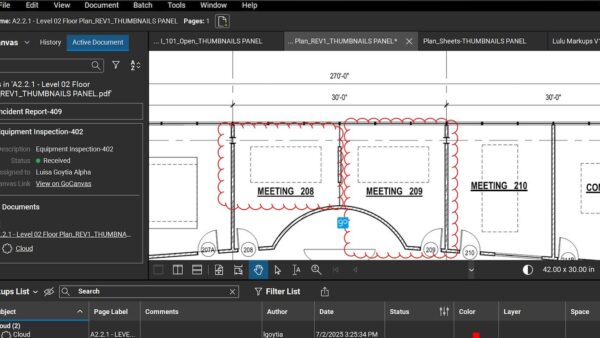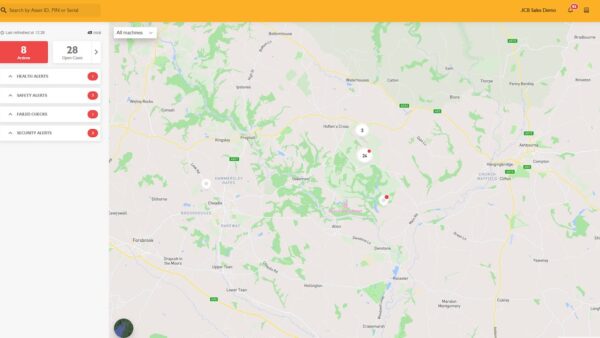
It’s a simple but vital question: why is the ‘why’ of ISO 19650 being lost? John Ford considers the challenge and proposes solutions.
In 2018, and later in 2020 via this article on BIMplus, I explained how the specification of information management processes (the ‘what’) was becoming increasingly well communicated as part of project management within construction, but the ‘why’ was being lost or ignored entirely.
What’s the implication of this? It signifies that information requirements lack alignment with authentic client needs. These misleading requisites would continue to cascade down the chain, be priced and eventually lead to an output that perhaps the client did not want or could not use.
The notion of a joined up information management process across an asset’s lifecycle predates the standard by well over a decade. Although it was perceived much earlier, it wasn’t until 2013/14, with the UK’s release of PAS 1192 Parts 2 and 3, that the intricate process emerged, outlining sequential steps for leveraging a pull-based approach to information management, using information modelling as the catalyst.

When this process was mandated by the government in 2011, both excitement and concern followed regarding its impact on our industry. Bold predictions foresaw a transformative digital landscape in five to 10 years, with billions saved and seamless information access.
This compelling vision is rooted in logic: in the past, the critical information often needed was incomplete, wrong or missing entirely, while this new concept theoretically allows you to identify what critical information you need and others spend time and resource providing it. And, of course, it should be relatively easy to define what information you need because you should be clear as to why you’re asking for it.
Defining ‘why’
“The crux of ISO 19650, however, is that it isn’t easy to define this crucial ‘why’. In fact, it is extremely difficult.”
The crux of ISO 19650, however, is that it isn’t easy to define this crucial ‘why’. In fact, it is extremely difficult as many clients are complex organisations, broken up into divisions or silos – something the construction industry can understand very well! Yet they are the ones that absolutely must drive this and find a way to break those silos down to build a well-rounded picture of their organisational, portfolio and project information needs as required by the first step of the process above.
Such an undertaking could span several months, if not years. Moreover, additional challenges might emerge should they realise that their organisation and associated stakeholders, including facility and asset managers, are unprepared or have not procured with modern digital methodologies in mind – a circumstance that prevails for many.
Putting the why before the what
So how can you complete the second step of the process by having the ‘what’ defined without a ‘why’ being well understood?
Well, it’s quite easy it seems. You can save yourself a lot of time by merely delegating development of the second step of the process above while partially or completely disregarding the first, possibly through copying an old template or asking someone to develop a shiny new one. This challenge persists even within exchange information requirements (EIR) that appear well developed on the surface. It’s clear they have devoted considerable time to scrutinising the ‘what’, but the ‘why’ remains rooted in a vision rather than practicality.
Let me clarify. These somewhat superior EIRs delineate information outputs, usually in a digital context that the end users just can’t use, and may not be able to use for many years due to their ongoing reliance on traditional formats or processes. They might even encounter difficulties in receiving such outputs, given the absence of foundational prerequisites such as a common data environment, a pivotal element of the process’s first step above. And without more incentives or investment, this could be the norm for some time.
No sign of improvement
“The reality is that clients and stakeholders aren’t receiving the necessary right advice or resources to focus on the first step and concentrate on the second.”
Regrettably, the data I’ve gathered, which I have maintained over the years, shows no improvement. Despite the introduction of tools like ISO 7817 and BSI Flex 1965, which have real potential to help solve these issues if the right time and energy was invested, there’s no evidence of a discernible shift in the right direction. The reality is that clients and stakeholders aren’t receiving the necessary right advice or resources to focus on the first step and concentrate on the second.
Although this arguably adds more cost than value for clients, subcontractors and consultants will also feel the pinch as they strive to digitise their information, navigating numerous new standards published every year and risk contract losses if they don’t comply. Worse still, anyone who inadequately articulates requirements and neglects proper pricing may incur substantial bills when they realise their error, further eroding margins.
So, what’s the answer?
Leadership
We have chosen a destination, but have not checked the compass to ensure we are still on course. I feel a rekindling of the idea behind the 2011 industry-driven approach where an industry working group outlined a path that led to the 2011 BIM mandate is vital once more to realign our trajectory, especially for the public sector. In doing so, we can address the unresolved ‘why’ challenge in various public sectors that is hindering the full adoption of an ISO 19650 approach.
This call is aimed at industry leaders to work closer with government to spearhead a renewed review as we did in 2010/11. The endeavour is no small feat, but is undeniably in our collective best interest as well as the public purse’s.
Ownership
Drawing from my 2020 BIMplus article, a reintroduction of the underachieved October 2016 objective, designed to test if projects are truly following the process above, is necessary. Using such an approach, we can determine whether our current course is genuinely on target or merely introducing inefficiency into what could otherwise be a value-driven process.
We knew this was required to ensure the 2016 objective was done right, but unfortunately it got forgotten about and never materialised. It may be seven years too late, but testing this across the public sector may result in findings that influence our leaders to take ownership by providing the vital evidence needed to agree a way forward and following it through.
Steady the ship
Prioritising proven concepts and fostering open dialogues is key. While adept at producing standards, our ability to ensure their foundation on tried-and-tested methodologies and share these methodologies remains limited. Numerous standards have been introduced with glaring deficiencies, yet open discussions on these issues remain uncommon. It’s challenging to openly admit shortcomings and invest resources in resolution, but it’s imperative for progress, even if it entails costs.
John Ford is head of digital delivery at Galliford Try.
Don’t miss out on BIM and digital construction news: sign up to receive the BIMplus newsletter.














